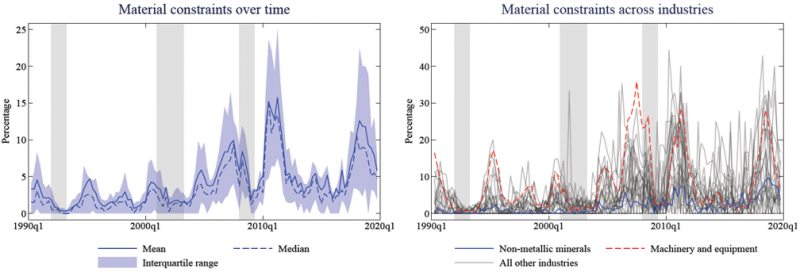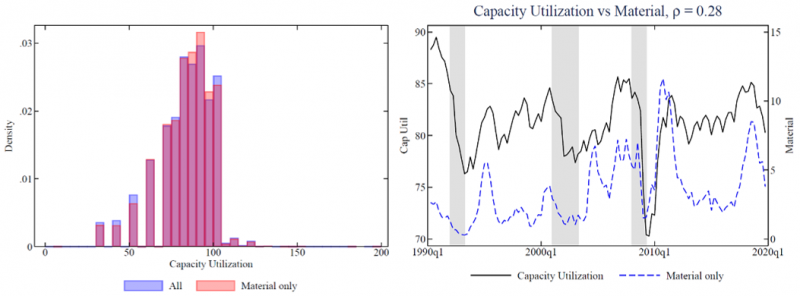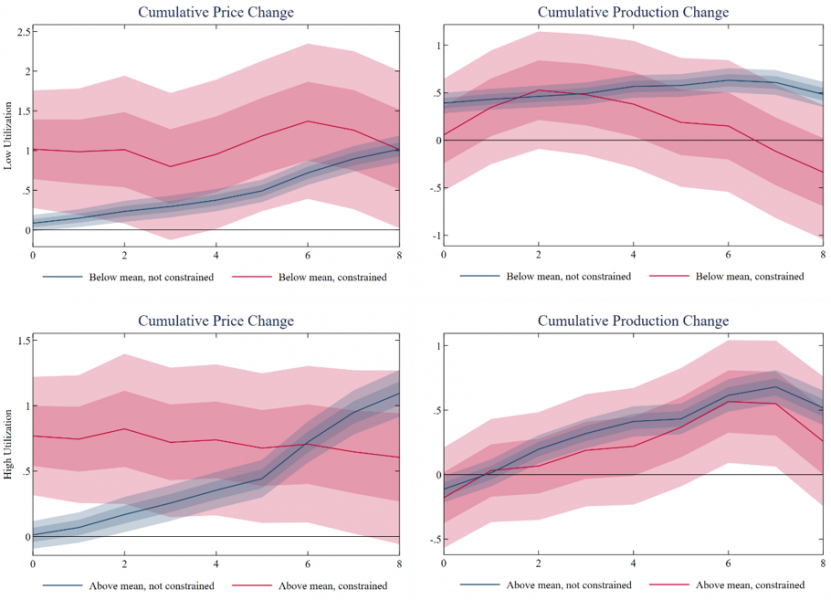References
Balleer, A. and Noeller, M., 2023, “Monetary policy in the presence of supply constraints: Evidence from German firm-level data”, CESifo Working Paper No. 10261.
Bank of England, 2020, Monetary Policy Report August 2020.
Boehm, C. E. and Pandalai-Nayar, N., 2022, “Convex Supply Curves”, American Economic Review, 112 (12), 3941-69.
Caballero, R. J. and Simsek, A., 2022, “A note on temporary supply shocks with aggregate demand inertia”, NBER Working Paper No. 29815.
Corrado, C. and Mattey, J., 1997, “Capacity Utilization”, Journal of Economic Perspectives, 11 (1), 151-167.
Fazzari, S. M., Morley, J. and Panovska, I., 2015, “State-dependent effects of fiscal policy”, Studies in Nonlinear Dynamics & Econometrics, 19 (3), 285-315.
Fornaro, L. and Wolf, M., 2022, “The scars of supply shocks: Implications for monetary policy”.
Ghassibe, M. and Zanetti, F., 2022, “State dependence of fiscal multipliers: The source of fluctuations matters”, Journal of Monetary Economics, 132, 1-23.
Jaorcinski, M. and Karadi, P., 2020, “Deconstructing monetary policy surprises – the role of information shocks”, American Economic Journal: Macroeconomics, 12 (2), 1-43.
Jorda, O., 2005, “Estimation and Inference of Impulse Responses by Local Projections”, American Economic Review, 95 (1), 161-182.
Kuhn, F. and George, C., 2019, “Business cycle implications of capacity constraints under demand shocks”, Review of Economic Dynamics, 32, 94-121.
Morley, J. and Piger, J., 2012, “The asymmetric business cycle”, Review of Economics and Statistics, 94 (1), 208-221.
Shapiro, M. D., 1989, “Assessing the Federal Reserve’s measures of capacity and utilization”, Brookings Papers on Economic Activity, 1989 (1), 181-241.
Stock, J.H. and Watson, M. W., 1999, “Forecasting inflation”, Journal of Monetary Economics, 44 (2), 293-335







